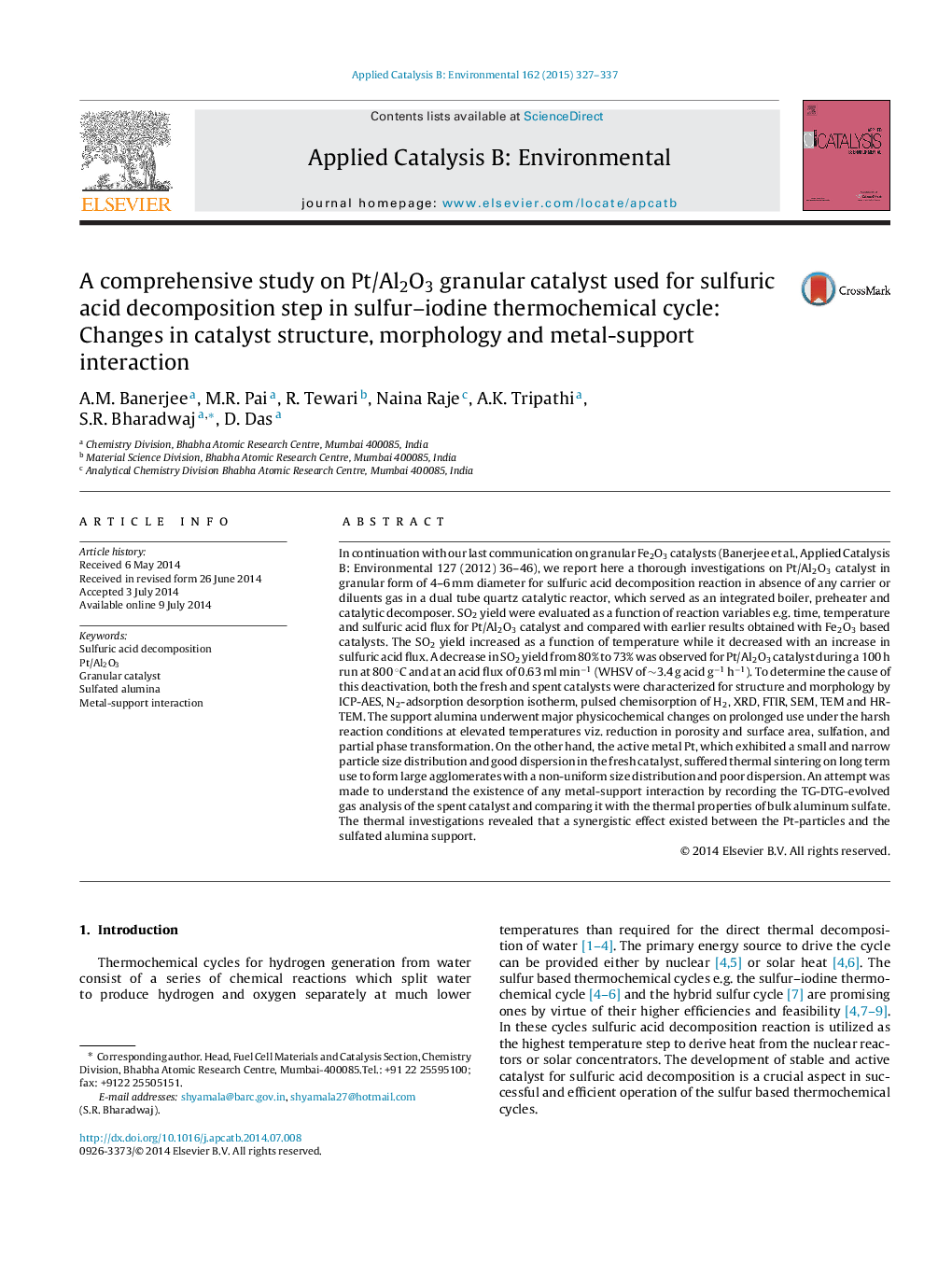| کد مقاله | کد نشریه | سال انتشار | مقاله انگلیسی | نسخه تمام متن |
|---|---|---|---|---|
| 45653 | 46418 | 2015 | 11 صفحه PDF | دانلود رایگان |

• Performance of Pt/Al2O3 granules for H2SO4 decomposition step in SI cycle.
• Reduction of activity from 80% to 73% in 100 h at 800 °C, WHSV of ∼3.4 g acid g−1 h−1.
• Reduction in porosity and surface area, sulfation, partial phase transformation of support observed.
• Pt metal particle agglomeration and growth.
• Synergy between the Pt metal and the modified support (sulfated alumina) established.
In continuation with our last communication on granular Fe2O3 catalysts (Banerjee et al., Applied Catalysis B: Environmental 127 (2012) 36–46), we report here a thorough investigations on Pt/Al2O3 catalyst in granular form of 4–6 mm diameter for sulfuric acid decomposition reaction in absence of any carrier or diluents gas in a dual tube quartz catalytic reactor, which served as an integrated boiler, preheater and catalytic decomposer. SO2 yield were evaluated as a function of reaction variables e.g. time, temperature and sulfuric acid flux for Pt/Al2O3 catalyst and compared with earlier results obtained with Fe2O3 based catalysts. The SO2 yield increased as a function of temperature while it decreased with an increase in sulfuric acid flux. A decrease in SO2 yield from 80% to 73% was observed for Pt/Al2O3 catalyst during a 100 h run at 800 °C and at an acid flux of 0.63 ml min−1 (WHSV of ∼3.4 g acid g−1 h−1). To determine the cause of this deactivation, both the fresh and spent catalysts were characterized for structure and morphology by ICP-AES, N2-adsorption desorption isotherm, pulsed chemisorption of H2, XRD, FTIR, SEM, TEM and HR-TEM. The support alumina underwent major physicochemical changes on prolonged use under the harsh reaction conditions at elevated temperatures viz. reduction in porosity and surface area, sulfation, and partial phase transformation. On the other hand, the active metal Pt, which exhibited a small and narrow particle size distribution and good dispersion in the fresh catalyst, suffered thermal sintering on long term use to form large agglomerates with a non-uniform size distribution and poor dispersion. An attempt was made to understand the existence of any metal-support interaction by recording the TG-DTG-evolved gas analysis of the spent catalyst and comparing it with the thermal properties of bulk aluminum sulfate. The thermal investigations revealed that a synergistic effect existed between the Pt-particles and the sulfated alumina support.
Figure optionsDownload as PowerPoint slide
Journal: Applied Catalysis B: Environmental - Volume 162, January 2015, Pages 327–337